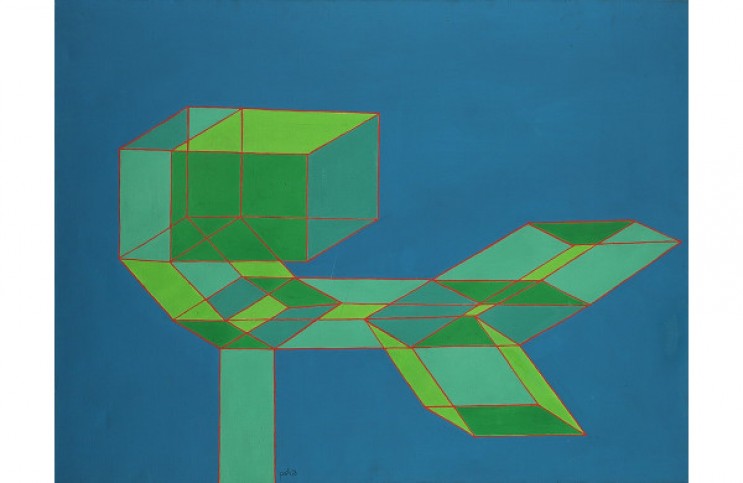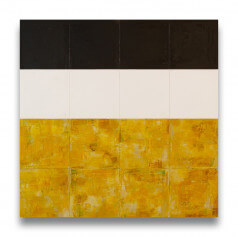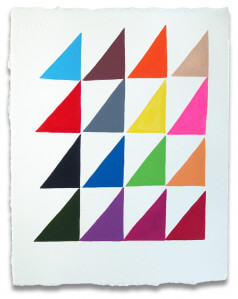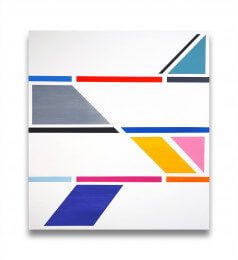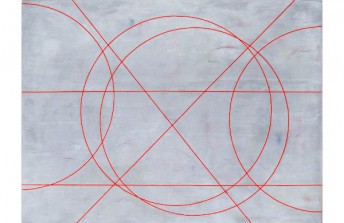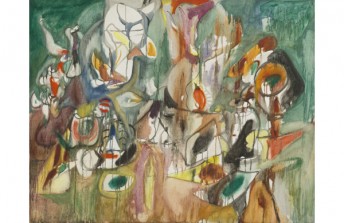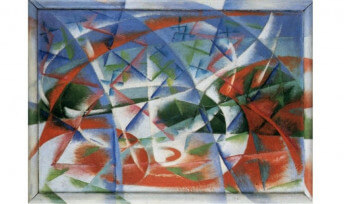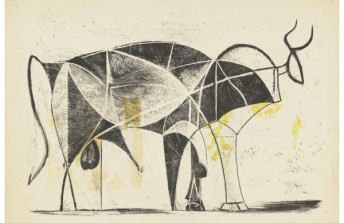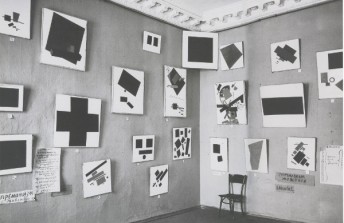Achille Perilli's Geometrically Irrational Art
Jan 3, 2019
An exhibition featuring 35 paintings by Achille Perilli recently went on view at The State Hermitage Museum in St. Petersburg, Russia. At age 91, Perilli is the last surviving member of the Forma 1 group, one of the most influential art collectives to emerge from Post World War II Italy. Viewers who are new to his work and ignorant of the history from which it evolved may very well tour this exhibition thinking only of the eye catching colors and intricate geometries Perilli conjured. They may never realize the critical political philosophy that inspired the artist, and thus may also fail to grasp the complex ramifications of showing these paintings at this particular institution at this particular time in history. Perilli, like all members of the Forma 1 group, was a Marxist. Born in 1927, he came of age as an artist just as Italy was struggling to rebuild its culture from the ashes of fascism. As in many other European countries at that time, Socialist Realism was gaining ground as the preferred artistic style of members of the Communist party. The official stance of the party was that the sole purpose of art was to realistically portray the struggle of the working class against the bourgeoisie. Despite his political affiliations, Perilli espoused a much different notion. He believed that realism in art was itself the ultimate bourgeois style. At one time, he theorized, realism may have been nothing more than a technique with which artists strived to understand the world. But ever since the Renaissance it had instead become the hierarchical master – the standard bearer for so-called true art – forcing all other kinds of art into a subservient role. This, Perilli felt, was an unfortunate mistake. He believed realistic perspective limited the imagination of humanity and kept culture at a standstill. He deemed pure forms – abstracted, and completely separate from their sources – to be the only universal, autonomous, and truly egalitarian elements in art.
The Forma 1 Manifesto
“Grouppo Forma 1” came into existence in 1947 with the publication of the first and only issue of Forma magazine. In addition to Perilli, the magazine listed the other group members as Carla Accardi, Ugo Attardi, Piero Dorazio, Mino Guerrini, Pietro Consagra, Giulio Turcato and Antonio Sanfilippo. It also included a short manifesto in which the values of the group were summed up. “In our work,” the manifesto read, “we use the forms of objective reality as the means to attain objective abstract forms; we are interested in the form of the lemon, and not the lemon.” It furthermore rejected “Every tendency aimed at inserting human details in the free creation of art,” as well as “the arbitrary, the apparent, the approximate, sensitivity, false emotionality, psychologisms, as spurious elements that compromise free creation.”
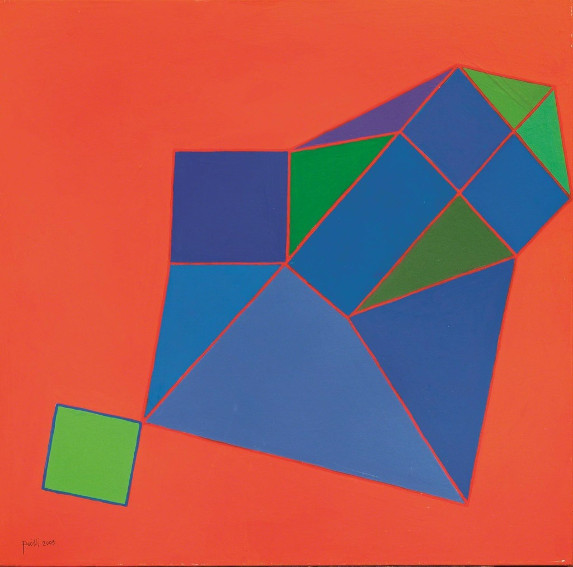
Achille Perilli - Espansione quadrata, 2003. Mixed media on canvas. 19 7/10 × 19 7/10 in; 50 × 50 cm. © Achille Perilli
Since free expression was so precious to them, it is no surprise that each Forma 1 artist developed their own distinctive visual style. Perilli became known for what he called “irrational geometry.” The name grew out of his praise for the spatial constructions of the Cubists, especially Picasso. But Perilli was not interested in the reality to which Cubist painting and sculpture pointed. Rather, he was interested in the forms – the planes and colors themselves. By extracting those formal elements, he constructed geometric compositions that evoke the aesthetic qualities of Cubist work but have no rational basis for existing. His compositions cannot be understood figuratively. They must be engaged by the eyes and the mind of the viewer: only then can meaning be inferred on a personal level. Perilli also made a conscious effort to make the structures of his compositions irrational. He acknowledged how early European abstract artists like Kandinsky and Malevich made progress in the reduction of the world into a language of lines and forms, but criticized them for maintaining the harmonious compositional structures of the past. Perilli arrange his paintings in such a way that they would not be seen as pictures to look at, per se, but as propositions to be worked out by the intellect.
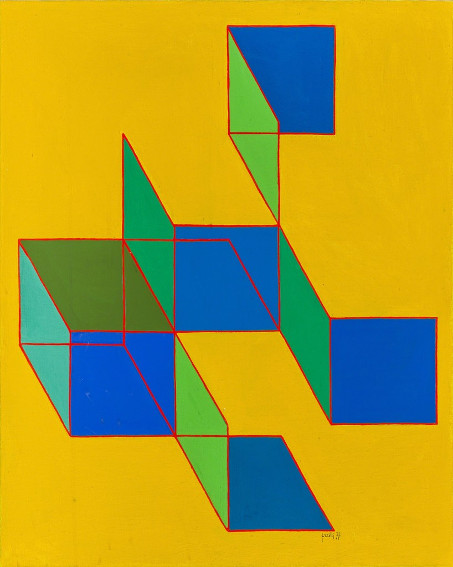
Achille Perilli - Phantom, 1977. Acrylic on canvas. 31 1/2 × 27 3/5 in; 80 × 70 cm. © Achille Perilli
Liberating the Aesthetic Discourse
The Perilli paintings currently on view at the Hermitage perfectly encapsulate the goals of Forma 1, and they elegantly express the lofty ideals Perilli maintained as an artist. Yet their importance goes far beyond their role in Italian art history alone. They also do something to liberate the international art historical aesthetic discourse. Every off-kilter composition, clash of colors, and haphazard proliferation of geometric forms is a reminder of a timeless conflict in human culture – the one, as Freud would say, between “civilization and its discontents.” By embracing abstraction, Perilli asserts the importance of the individual as a force that is not subservient to society, but one to which society looks for creative direction and inspiration.

Achille Perilli - The tiger engagements, 1979. Mixed media on canvas. 19 7/10 × 19 7/10 in; 50 × 50 cm. © Achille Perilli
Like the Abstract Expressionists who were active at the same time in America, Perilli and the other Forma 1 artists explored the psychological depths of humanity in the aftermath of war. Albeit from different aesthetic positions they espoused the glorification of the individual mind and the abstractions that flow from it. For this reason, it would not be surprising to see this exhibition pop up in Italy right now, or in Paris, London, Munich, or New York – places where people are struggling at the moment to stave off authoritarian political forces. It is a bit surprising to see it in St. Petersburg. The subversive message lurking beneath the surface of these paintings states unequivocally that the total creative freedom of individuals to express themselves abstractly is not incompatible with the ideals on which modern day Russia was founded. When this work debuted in Post War Italy, it helped usher in a cultural and intellectual revolution. Could the appearance of Perilli in contemporary St. Petersburg have a similar effect?
Abstract Art in Italy: Achille Perilli is on view through 3 February 2019 at the Hermitage Museum in St. Petersburg, Russia.
Featured image: Achille Perilli - Kolossal, 1973. Oil on Canvas. 34 4/5 × 45 7/10 in; 88.5 × 116 cm. © Achille Perilli
All images used for illustrative purposes only
By Phillip Barcio
Featured Artists

Ashlynn Browning
1977
(USA)American
Matthew Langley
1963
(USA)American
Macyn Bolt
1954
(USA)American
Jessica Snow
1964
(USA)American
